The use of innovative technologies in the production of glass made it one of ...
|
|
In the modern world, the development of building technologies is so rapidly that ... |
The irresistible desire of the inhabitants of megacities at least one step closer to nature ... |
Foam polystyrene. Features of the material, characteristics and application

Polistyle foam is quite interesting material. The method of receipt was patented back in 1928, and since then has been repeatedly modernized. The main advantage is low thermal conductivity, and only then in lightweight. Polistyle foam is widely used in various industries and construction, and each person one way or another has encountered products from it in everyday life. In addition, polystyrene foam, the price of products from which is at a low level - will be a good option if you want to insulate your house.
Table of contents
- What is polystyrene foam and what is its difference from foam?
- Polystyrene foam, characteristics and properties
- Application area
- Disadvantages of polystyrene foam: myth overview
What is polystyrene foam and what is its difference from foam?
Polistyle foam is carried out by adding gas to the polymer mass of polystyrene, which, when subsequently heated, increases significantly in volume, filling the entire shape. Depending on the variety of material, different gas is used to create volume: for simple variations, natural gas, fire -resistant varieties of polystyrene foam are filled with carbon dioxide.
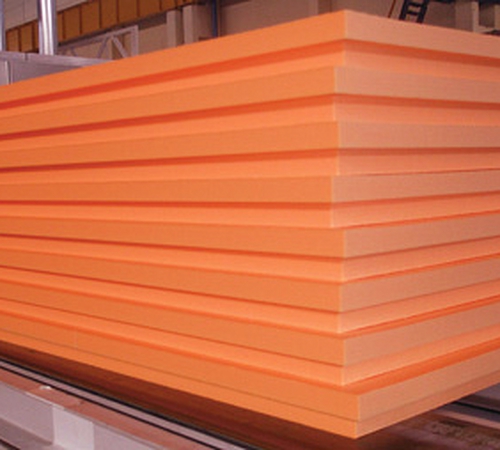
Quite often, lovers tend to call polystyrene and polystyrene polystyrene and the same material. However, this is not entirely true. They have a common basis, but the differences and characteristics are quite significant. If you do not go into long spatial reasoning, then the main distinguishing features are as follows:
- the density of foam is significantly lower, 10 kg per m3, while indicators of polystyrene foam 40 kg per m3,
- polistyle foam does not absorb steam and moisture,
- the appearance is different. Foam - has internal granules, polystyrene foam is more homogeneous,
- foam is characterized by a lower cost, which is noticeable when using it as a thermal insulation material for the outer skin of the building walls,
- foam polystyrene has better mechanical strength.
Foam is made of polymer raw materials, which is processed by water steam, as a result of which the volume of granules increases significantly. But at the same time, this also leads to the fact that micropores also increase in size, as a result of which the connection between the granules worsens and gradually, when exposed to atmospheric precipitation and climatic conditions, this leads to the fact that the material weakens. Roughly speaking, if you turn the sheet of foam in half, a large number of granules are formed. This is not characteristic of polystyrene foam, since initially it consists of closed cells that provide moisture and vapor permeability of the material. At the beginning of production, its granules are melted under the influence of high temperatures, forming a uniform fluid mass, which is filled with gas.
The material itself also has several varieties:
- Extruded polystyrene foam is almost the same material as the impressive, the difference is the use of equipment such as an extruder, therefore, often extruded and extrusion polystyrene foam is called the same material.
- The extrusion is also obtained by processing the final mass of polymer material, and also represents a homogeneous mass. The variety is used for the manufacture of disposable packaging and dishes. Roughly speaking, meat products in supermarkets are beamed precisely in packaging from extrusion polystyrene foam.
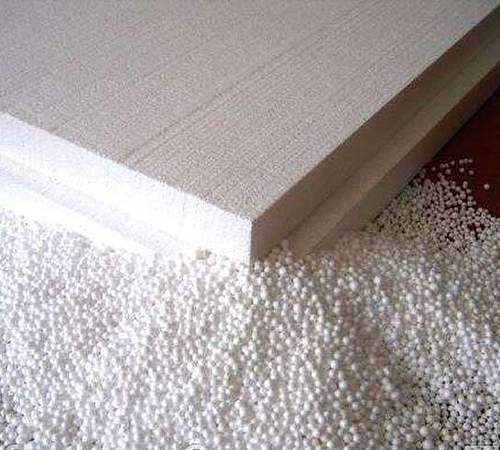
- The press method of obtaining material is more expensive, since it provides for the subsequent pressing of the mixture foamed gas. In this case, it acquires additional strength.
- Autoclade polystyrene foam is rarely mentioned, and in fact, this is an extrusion variety in which the foaming and casing of the material is carried out using an autoclave.
- Increased is one of the most popular varieties. From the granules of polystrril, moisture is first removed by drying, then foamed at a temperature of 80C, after which it is again dried and then heated again. The resulting mixture is filled with a form where it is already self -sealing at the time of cooling. This type of polystyrene foam is more fragile, but it requires half as much isoped for its receipt, which affects the final cost.
Polystyrene foam, characteristics and properties
Polistyle foam is ambiguous material: someone extols its properties to heaven, someone, on the contrary, with foam at the mouth requires an immediate and complete prohibition of its use on the basis of the revealing works of one academician. True, the widespread spread of polystyrene foam and its high popularity include conclusions to the fact that this material is really good and has the following advantages:
- Low thermal conductivity allows you to achieve a significant effect of insulation. In fact, 11 cm polystyrene foam are able to provide the same thermal insulation as the wall of silicate brick more than two meters. The thermal conductivity of the material is 0.027 W/MK, which is much lower than that of concrete or brick,
- Moisture resistance of the material. Even with prolonged moisture exposure, absorpability will be no more than 6%, so there is no need to fear deformation of the structure of polystyrene foam.
- Foam polystyrene is durable and is able to withstand up to 60 cycles of temperature exposure from -40 to +40 ° C. Each cycle is a calculated climatic year.
- Insensitiveness to the formation of biological environments. Foam polystyrene will not become a place for reproduction of fungal and mold.
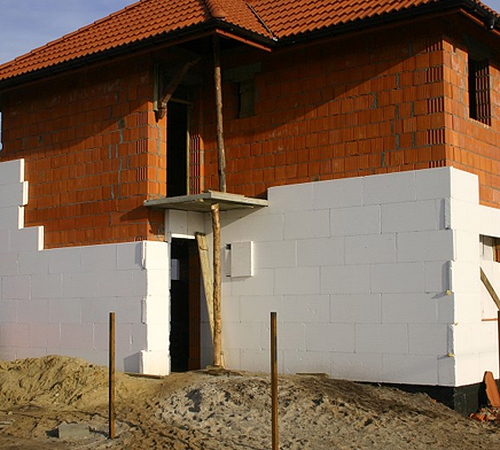
- The harmlessness of the material. In its production, non -toxic components are used, so products from polystyrene foam are used in the food industry. For example, for storing products.
- Due to the lightweight, the insulation of the polystyrene of the facades of the building takes much less time and effort than when using other means.
- Fireproof varieties of material when exposed to open flame tend to self -adjust and melted without spreading combustion. The temperature of the spontaneity of the polystyrene foam is an indicator of +490C, which is almost twice as higher than that of wood. In the absence of an exposure to more than four seconds of an open flame source on the material, polystyrene foam fades. Thermal energy during the mountains is released 7 times less than that of a tree. Therefore, polystyrene foam is not able to support the fire of the fire.
- Ensuring noise insulation. This quality is especially relevant for residents of typical apartments. A layer of insulating material 3 cm thick is enough to reduce the level of noise penetration by 25 dB.
- The vapor permeability of the material is at a low mark of 0.05 mg/m*h*PA, regardless of the degree of foam and density of the variety. In fact, vapor permeability indicators are similar to the wood log house of pine or oak.
- It is resistant to alcohols and broadcasts, but is easily subject to destruction when solvents come to the surface.
- Mechanical tensile strength is at least 20 MPa.
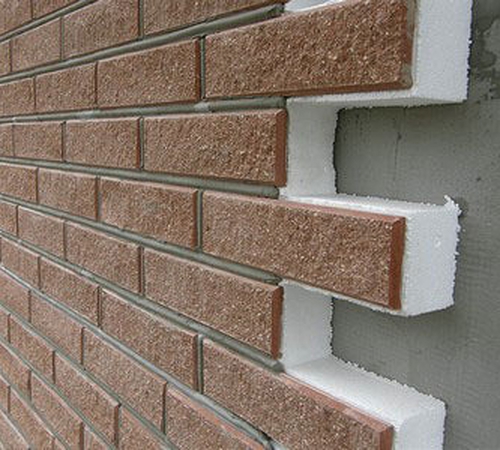
As can be seen from the above, polystyrene foam is an effective tool for solving many problems: from the use of some varieties as a package to the implementation of heat and waterproofing of buildings facades. In addition, the material is also used for other purposes in construction, which will be discussed further.
Application area
Polistyle foam in construction is used primarily to warm the following elements:
- water pipes,
- roofs,
- sexes,
- door and window slopes,
- walls.
For example, the consumption of polystyrene foam for isolation of pipes is economically justified and appropriate due to its capabilities. Moreover, for these purposes, an obscured block polystyrene foam is used, which allows, if damage to the pipe occurs, it is easy to access it by removing the desired section of the protective coating.
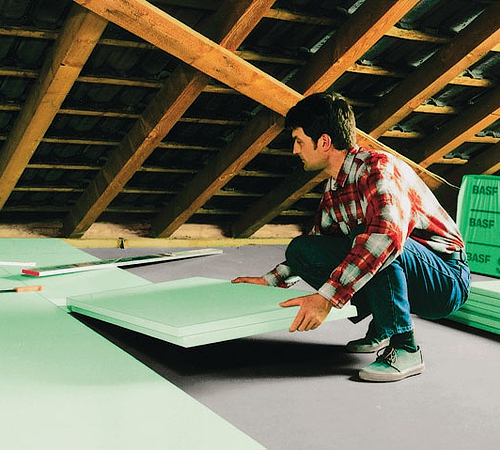
Polistyle foam is actively used in laying transport tracks. It reduces the effect of vertical load on the coating during the construction of buildings. Distributed in production SIP panels.
The scope of the use of polystyrene foam, the characteristics of which, in combination with a low price, make it extremely attractive for use in any industry, is practically unlimited. The only thing that should be taken into account is the material has a low density, therefore, is subject to any mechanical damage.
Disadvantages of polystyrene foam: myth overview
In addition to the bouquet of advantages, there are also disadvantages. Moreover, a large number of various myths are associated with polystyrene foam, which must be considered in more detail:
- Many manufacturers argue that the extrusion foamed polystyrene foam significantly exceeds the rest of the varieties, as evidence of which often set the table of comparative characteristics of the specified variety compared to ordinary polystyrene. Nevertheless, the difference in thermal conductivity between extrusion and pressed polystyrene foam is practically not noticeable and is 0.002 units, at the same time as due to advertising, the cost of extrusion plates for insulation is higher.
- The maximum density of polystyrene foam gives the same high indicators during insulation. According to experts, such a statement has some discrepancies with reality, since the more densely the molecules adjust to each other, the higher the thermal conductivity and the cold is easier to penetrate the room. The way out of this situation will be the use of polystyrene foam plates with low density, which must be covered with a reinforcing mesh and a protective layer of primer in order to increase their mechanical strength.

- Fire -resistant polystyrene foam is absolutely non -combustible and harmless to the human body. Any building material, when exposed to open flame on it, will show the properties of combustion, more or less. However, the temperature of spontaneous combustion in polystyrene foam is higher than in wood and in addition, when burning, it emits a much smaller amount of thermal energy. It is important to remember that fire -resistant varieties, despite the loud name, are by no means able to stop the flame, only reduce its effect. A serious disadvantage of fire -resistant variety in comparison with the usual will be carbon dioxide, which is used in its production. As a result, when melting, the material will begin to distinguish a significantly large amount of harmful substances. Some sellers speak of non -combustibility on the basis of demonstrative experience: when the basis with the plate mounted on it begins to warm up from the reverse side. When exposed to high temperature, the polystyrene foam begins to melt and deform, while there is no fire. However, while the flame affects it - the material will continue to burn.
- Antipyrene added to polystyrene foam for its fire resistance - in any case, pure poison. Another controversial statement. Antipine is a component containing in its structure substances that slow down the combustion process. They differ in composition and contain various components, ranging from formaldehydes, which really pose a danger to humans to magnesium salts, which are quite environmentally friendly and safe. Recently, solutions based on inorganic salt have been increasingly used, so they are not able to harm health. Antipyrene is often used to impregnate and apply a protective layer to wood to increase its fire resistance.
- Installation of polystyrene heat -insulating materials is not able to provide heat. In fact, the task of the insulation is not to bring heat, but to keep it indoors. Roughly speaking, the use of insulation plates will significantly reduce heat output outside the room, thereby do not have to heat the street at your own expense.
- Foam polystyrene is dangerous to health. Modern production allows you to create material from environmentally friendly components, so there is no threat to health. Moreover, the widespread use of products for storing semi -finished products and use in everyday life speaks, just about the safety of the material.
More often, problems arise if you want to buy polystyrene foam cheaper and low -quality varieties. Supervisory boards from such material really have less strength and are able to begin to deform already at a temperature above 40 ° C. The main rule when using materials from polystyrene polystyrene in any industry will be ensuring the quality and reliability for which you need to pay. And then during operation only advantages will appear.

Moreover, widespread
"Moreover, the widespread use of products for storing semi -finished products and use in everyday life speaks, just about the safety of the material." I remember there were blankets with smallpox, people also went.
And we do not forget about styreol, benzene, formaldehyde, Toluol, ethylbenzole and acetopenon.